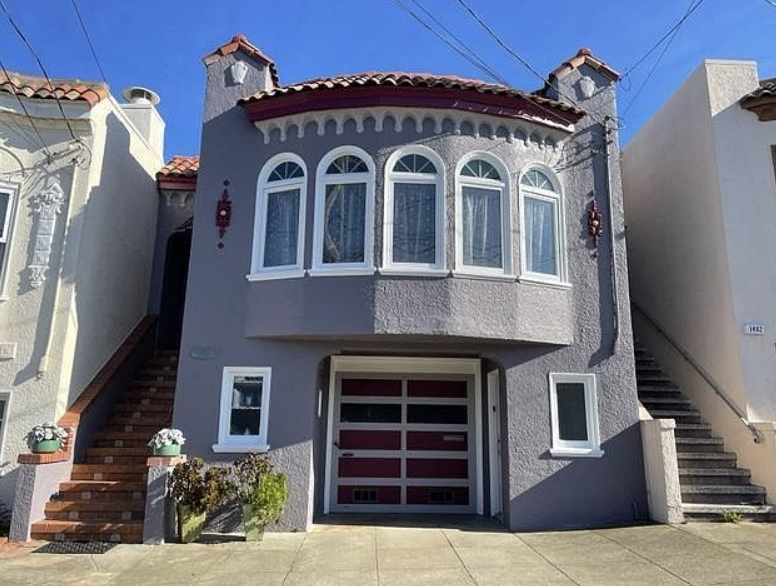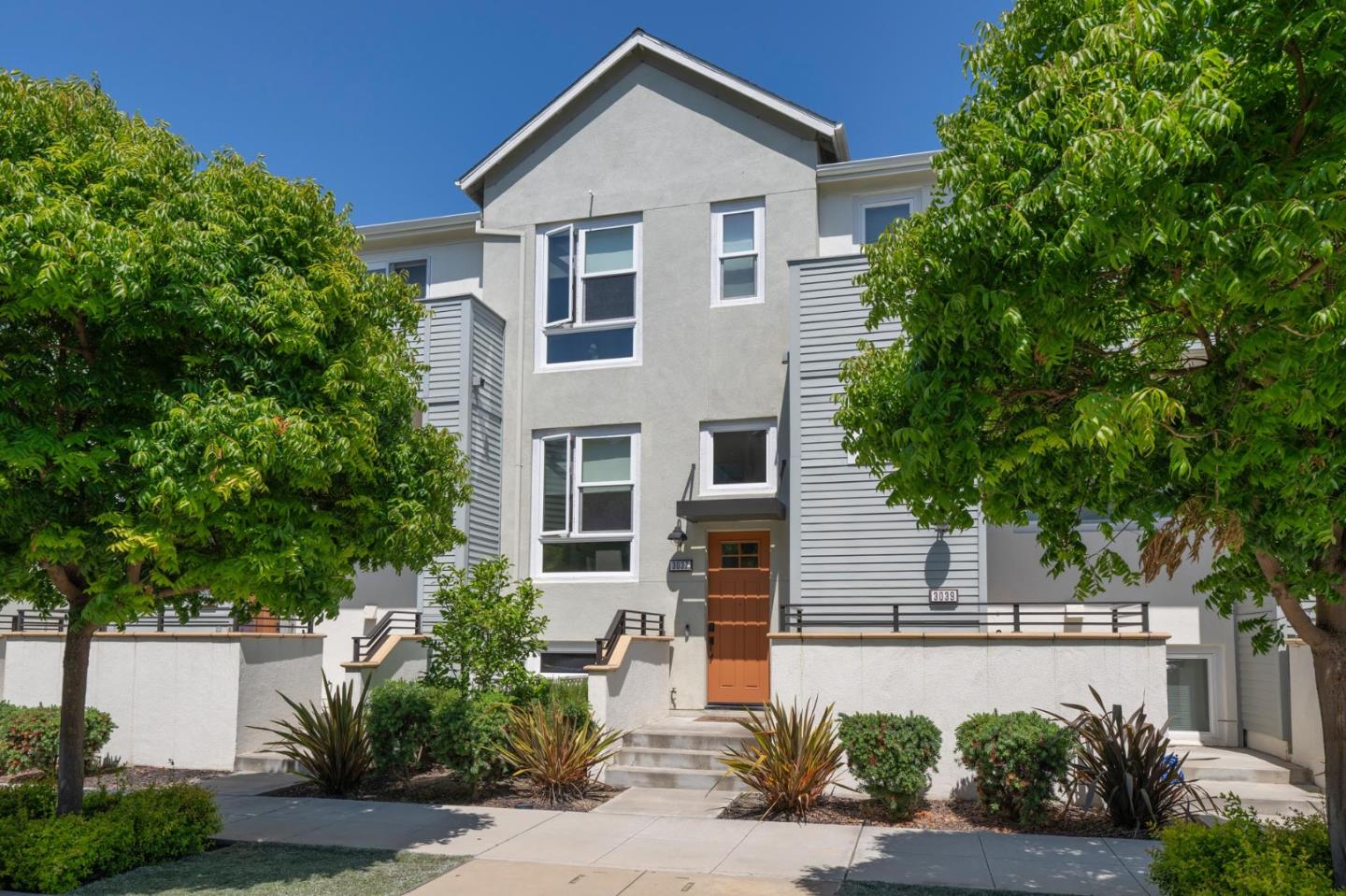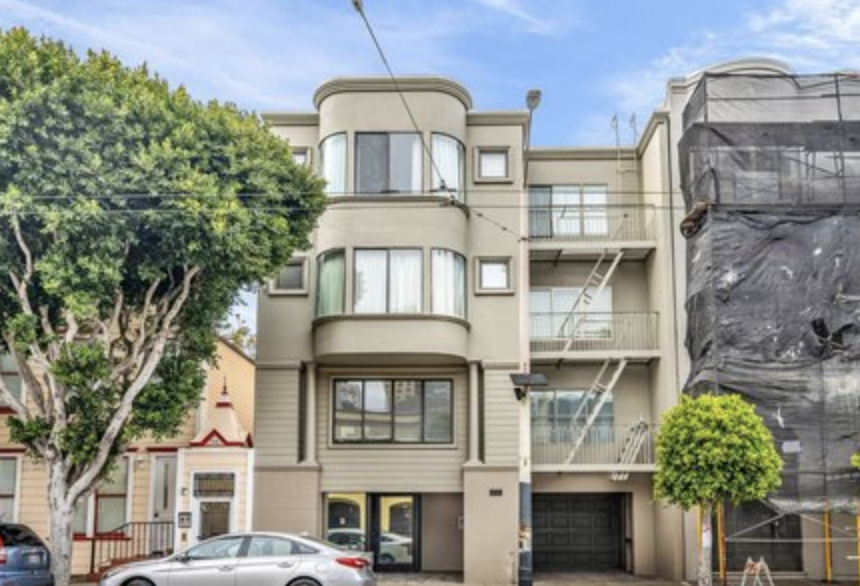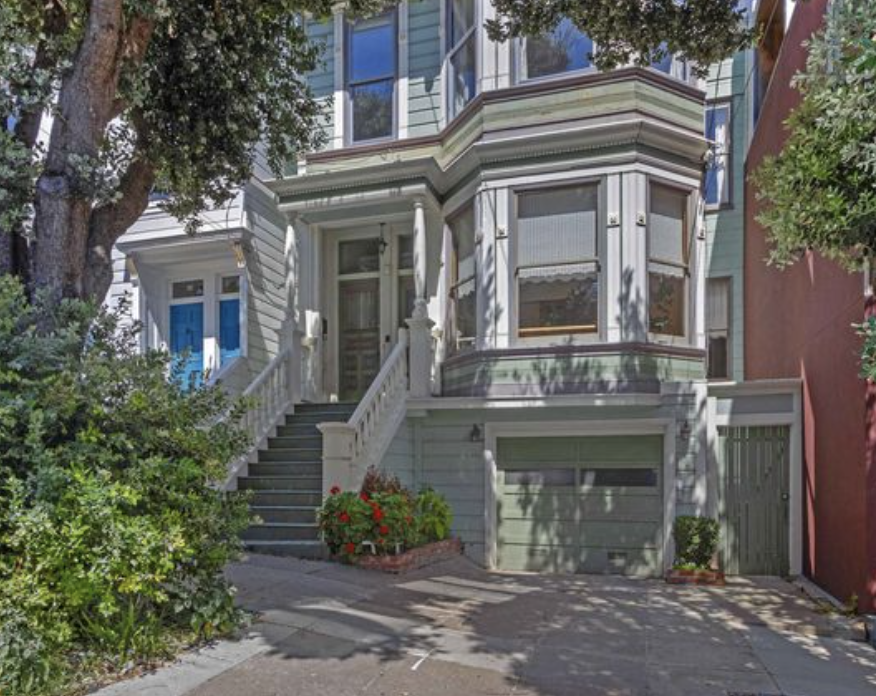
Cap rate analysis for median-priced single-family homes in San Francisco, San Mateo, and more, including equity tied up and time required to manage assets.
1. The capitalization rate is calculated as:
Cap Rate = (Net Operating Income (NOI) / Property Value)where NOI = Annual Rental Income - Operating Expenses (e.g., property taxes, insurance, maintenance, property management fees, and vacancy costs).
Cap rates reflect the return on investment for a property, excluding financing, and are influenced by location, demand, property type, and market conditions. In high-demand, high-cost areas like the Bay Area, cap rates are typically lower due to strong appreciation and lower perceived risk, often ranging from 3-5% for single-family homes, compared to 4-10% in less competitive markets.Bay Area Median Home Prices and Rental Data:Based on recent data (up to July 2025), median single-family home prices in the Bay Area vary significantly by county/city. Here are estimates for key cities, using median sale prices from real estate market sources, with rental income estimates based on market trends:
- San Francisco:
- Median Price (2025): $1.5M
- Median Monthly Rent (2-3 bed single-family home): ~$4,500–$5,500
- Annual Gross Rent: $54,000–$66,000
- Operating Expenses (30-40% of gross rent, including taxes (1.2% of value), insurance ($2,000/year), maintenance (~1% of value), and 5% vacancy): ~$21,600–$26,400
- NOI: $32,400–$39,600
- Cap Rate: ~2.2%–2.6% ($32,400–$39,600 / $1.5M)
- San Mateo:
- Median Price: $1.6M
- Median Monthly Rent: ~$4,800–$6,000
- Annual Gross Rent: $57,600–$72,000
- Operating Expenses: ~$23,000–$28,800
- NOI: $34,600–$43,200
- Cap Rate: ~2.2%–2.7%
- Santa Clara (San Jose):
- Median Price: $1.3M
- Median Monthly Rent: ~$4,000–$5,000
- Annual Gross Rent: $48,000–$60,000
- Operating Expenses: ~$19,200–$24,000
- NOI: $28,800–$36,000
- Cap Rate: ~2.2%–2.8%
- Alameda (Oakland):
- Median Price: $1.3M
- Median Monthly Rent: ~$3,800–$4,800
- Annual Gross Rent: $45,600–$57,600
- Operating Expenses: ~$18,200–$23,000
- NOI: $27,400–$34,600
- Cap Rate: ~2.1%–2.7%
- Contra Costa (Walnut Creek):
- Median Price: $810,000
- Median Monthly Rent: ~$3,500–$4,500
- Annual Gross Rent: $42,000–$54,000
- Operating Expenses: ~$16,800–$21,600
- NOI: $25,200–$32,400
- Cap Rate: ~3.1%–4.0%
Analysis:
- Cap rates for single-family homes in the Bay Area are low (2.1%–4.0%), reflecting high property values driven by tech wealth, limited supply, and strong demand.
- Lower-cost areas like Contra Costa offer higher cap rates (up to 4.0%) due to lower purchase prices relative to rents, making them more attractive for cash flow-focused investors.
- High-cost areas like San Francisco and San Mateo have lower cap rates (2.2%–2.7%), where investors often prioritize long-term appreciation over immediate cash flow.
- These cap rates are below the 4-10% range typical for multifamily properties in less competitive markets, indicating that single-family homes in the Bay Area are less cash-flow efficient but benefit from significant appreciation potential.
2. Equity Tied Up in Investment Properties
Assumptions:
- Properties are held for 10+ years, as per your assumption.
- Most small investors use financing (e.g., 20–30% down payment) rather than purchasing all-cash, though some may have paid off mortgages over 10 years.
- Equity is the current property value minus any remaining mortgage balance.
- Bay Area homes have appreciated significantly over the past decade (e.g., ~7.79% annually from 2012–2022).
Equity Calculation:
Let’s estimate equity for a median-priced single-family home purchased 10 years ago (2015) in each city, assuming a 20% down payment and a 30-year fixed mortgage at 4% (typical for 2015). I’ll use 2025 median prices and assume 7% annual appreciation from 2015 purchase prices.
- San Francisco:
- 2015 Median Price: ~$718,000
- Down Payment (20%): $143,600
- Initial Loan: $574,400
- 2025 Value: $1.5M
- Remaining Mortgage (after 10 years): ~$450,000 (using amortization schedule)
- Equity: $1.5M - $450,000 = $1,050,000
- Equity as % of Value: ~70%
- San Mateo:
- 2015 Median Price: ~$764,000
- Down Payment: $152,800
- Initial Loan: $611,200
- 2025 Value: $1.6M
- Remaining Mortgage: ~$478,000
- Equity: $1.6M - $478,000 = $1,122,000
- Equity as % of Value: ~70%
- Santa Clara:
- 2015 Median Price: ~$620,000
- Down Payment: $124,000
- Initial Loan: $496,000
- 2025 Value: $1.3M
- Remaining Mortgage: ~$388,000
- Equity: $1.3M - $388,000 = $912,000
- Equity as % of Value: ~70%
- Alameda:
- 2015 Median Price: ~$620,000
- Down Payment: $124,000
- Initial Loan: $496,000
- 2025 Value: $1.3M
- Remaining Mortgage: ~$388,000
- Equity: $1.3M - $388,000 = $912,000
- Equity as % of Value: ~70%
- Contra Costa:
- 2015 Median Price: ~$386,000
- Down Payment: $77,200
- Initial Loan: $308,800
- 2025 Value: $810,000
- Remaining Mortgage: ~$241,000
- Equity: $810,000 - $241,000 = $569,000
- Equity as % of Value: ~70%
Analysis:
- Small investors typically have significant equity (~70% of current value) due to appreciation over 10 years, even with initial financing.
- Equity ranges from ~$569,000 (Contra Costa) to ~$1.12M (San Mateo), reflecting higher appreciation in pricier areas.
- This equity represents a substantial portion of the investor’s net worth, which can limit liquidity and increase opportunity costs if tied up in a low-yielding property (given low cap rates).
- If the property is mortgage-free (possible after 10+ years), equity equals the full property value ($810,000–$1.6M), further increasing the capital tied up.
3. Time Input for Managing an Investment Property (Avg. 20-Month Tenant Turnover)
Assumptions:
- Tenant turnover occurs every 20 months over a 10-year period (120 months), resulting in ~6 turnovers (120 / 20 = 6).
- The investor self-manages the property (common for small investors with 1–2 properties) rather than hiring a property manager (which would cost ~8–10% of rent).
- Time estimates are based on typical landlord responsibilities in California, accounting for strict regulations like the Tenant Protection Act of 2019, which caps rent increases and requires just-cause evictions.
Time Breakdown:
- Finding and Screening Tenants (per turnover):
- Advertising, showings, and application processing: ~10–20 hours
- Background/credit checks, lease preparation: ~5–10 hours
- Total per Turnover: ~15–30 hours
- Over 10 Years (6 turnovers): 90–180 hours
- Move-In/Move-Out Coordination:
- Inspections, coordinating repairs/cleaning: ~5–10 hours per turnover
- Over 10 Years: 30–60 hours
- Ongoing Management (per year):
- Rent collection, tenant communication: ~10–20 hours/year
- Maintenance/repairs (e.g., responding to issues, coordinating contractors): ~10–20 hours/year
- Total per Year: ~20–40 hours
- Over 10 Years: 200–400 hours
- Turnover Repairs/Renovations:
- Minor repairs, painting, cleaning between tenants: ~10–20 hours per turnover
- Over 10 Years: 60–120 hours
- Administrative Tasks:
- Taxes, insurance, compliance with regulations: ~5–10 hours/year
- Over 10 Years: 50–100 hours
- Total Time Over 10 Years:
- Low Estimate: 90 (tenant screening) + 30 (move-in/out) + 200 (ongoing) + 60 (repairs) + 50 (admin) = 430 hours (~43 hours/year, or ~4 hours/month)
- High Estimate: 180 + 60 + 400 + 120 + 100 = 860 hours (~86 hours/year, or ~7 hours/month)
Analysis:
- Managing a single-family rental requires ~4–7 hours/month on average, with spikes during tenant turnover (15–30 hours per event).
- California’s strict landlord regulations increase administrative time, especially for lease compliance and rent increase calculations.
- For small investors, this time commitment can be significant, especially if balancing a full-time job or other properties. Hiring a property manager (costing ~$500–$600/month in the Bay Area) could reduce time but lower NOI and cap rates further.
4. Inflection Point for Financial Responsibility
The inflection point where carrying a second home as an investment becomes financially irresponsible depends on the investor’s goals (cash flow vs. appreciation), opportunity costs, and financial constraints. Let’s evaluate key factors:Key Considerations:
- Low Cap Rates: At 2.1%–4.0%, Bay Area single-family homes generate modest cash flow compared to alternative investments (e.g., 10-year Treasury bonds at 3% in 2021). Investors rely on appreciation, but this ties up significant capital ($569,000–$1.12M in equity).
- Opportunity Costs: Equity tied up in a low-yield property could be invested elsewhere (e.g., stocks at ~7–10% historical returns or other real estate markets with higher cap rates).
- Carrying Costs: High property taxes (~1.2% of value, or $9,700–$19,200/year), insurance, and maintenance erode cash flow, especially if rents are capped by regulations.
- Tenant Turnover Risks: Frequent turnover (every 20 months) increases vacancy costs (5–10% of annual rent) and repair expenses, reducing NOI.
- Market Risks: Forecasts suggest a potential 1.8%–4.7% price drop in San Francisco by late 2025, driven by high mortgage rates (6–7%) and increasing inventory. A prolonged downturn could reduce equity and make selling less viable.
- Time Commitment: ~4–7 hours/month may be unsustainable for small investors with limited time, especially if unexpected issues (e.g., evictions, major repairs) arise.
- Liquidity Constraints: With ~70% equity tied up, selling incurs high transaction costs (6% realtor fees, ~$48,600–$96,000), and reinvesting elsewhere may be challenging in a high-cost market.
Inflection Point Scenarios:
- Cash Flow Breakeven: If NOI barely covers expenses and mortgage payments (if any), the property may not justify the time and capital. For example, in San Francisco ($1.5M property, $32,400–$39,600 NOI), monthly cash flow after expenses is $2,700–$3,300. If mortgage payments ($3,000/month for remaining $450,000 at 4%) exceed this, the investor loses money monthly.
- Opportunity Cost Threshold: If alternative investments (e.g., S&P 500 at 7% return) yield more than the property’s cap rate + appreciation (e.g., 2.5% + 3% = 5.5%), the investor may be better off selling and reinvesting. For $1M in equity, a 7% return elsewhere yields $70,000/year vs. $25,000–$40,000 NOI from the property.
- Market Downturn: A 5% price drop ($75,000–$80,000 for a $1.5M–$1.6M property) could erase annual appreciation gains, making it harder to justify holding if cash flow is minimal.
- Time Burden: If the investor values their time at, say, $50/hour, the 43–86 hours/year (430–860 hours over 10 years) equates to $2,150–$4,300/year in “labor cost,” further reducing effective returns.
Critical Inflection Point:
Carrying a second home becomes financially irresponsible when the total return (cap rate + annual appreciation) falls below the investor’s opportunity cost (e.g., 5–7% for alternative investments) and the time commitment significantly impacts their lifestyle or other income sources. For example:
- In San Francisco, a 2.5% cap rate + 3% appreciation = 5.5% total return, below the 7% stock market average. With $1M in equity tied up and ~4–7 hours/month of management time, the investor may find better returns elsewhere with less effort.
- In Contra Costa, a 4.0% cap rate + 3% appreciation = 7% return, matching alternative investments, but the lower equity tied up ($569,000) and similar time commitment make it more viable for cash flow-focused investors.
Recommendations:
- Sell if Cash Flow is Negative: If NOI doesn’t cover expenses and mortgage (if applicable), or if cash flow is minimal (<$1,000/month after all costs), selling may be prudent, especially in high-cost areas like San Francisco or San Mateo.
- Hold for Appreciation: If the investor can tolerate low cash flow and believes in long-term appreciation (historically ~7% annually in the Bay Area), holding may make sense, particularly in stable markets like Santa Clara or Alameda.
- Diversify: Consider selling and reinvesting in markets with higher cap rates (e.g., Sacramento, with median prices ~$550,000 and higher yields) or other asset classes to reduce risk and improve liquidity.
- Outsource Management: If time is a constraint, hiring a property manager can reduce the burden but will lower NOI by ~8–10%, pushing cap rates even lower.
Explore Alternative Investment Opportunities:
Commercial PropertiesWhile investing in a single-family home in the Bay Area can offer compelling benefits like appreciation and rental income, diversifying your portfolio by exchanging residential properties for commercial properties—specifically light industrial buildings—can provide unique advantages. These properties, often home to showrooms, small businesses, or warehouses, are increasingly sought after in the Bay Area due to the region’s vibrant economy and demand for flexible commercial spaces.
Light industrial buildings typically attract stable tenants, such as artisanal manufacturers, tech startups, or retail showrooms, who sign long-term leases (often 5 to 15 years), reducing vacancy risks and ensuring predictable cash flow compared to the shorter-term leases common in residential rentals.One key benefit of light industrial properties is the prevalence of triple net (NNN) leases, where tenants are responsible for property taxes, insurance, and maintenance costs. This structure minimizes the landlord’s operational responsibilities, allowing you to focus on maximizing returns rather than managing day-to-day upkeep. Additionally, the Bay Area’s robust demand for commercial spaces, driven by its proximity to major markets and innovation hubs, supports strong appreciation potential for light industrial properties, often with less exposure to the volatility of the residential housing market.
Example: $2,000,000 Light Industrial Building Exchange
To illustrate the potential of this investment strategy, consider exchanging a residential property for a $2,000,000 light industrial building in the Bay Area through a 1031 exchange, which allows you to defer capital gains taxes. Suppose the property generates $140,000 in annual net operating income (NOI) from long-term leases with stable tenants, such as a showroom for a local furniture designer or a logistics company. The capitalization rate (cap rate), a key metric for evaluating commercial real estate, is calculated as NOI divided by the property’s purchase price:
Cap Rate = NOI ÷ Purchase Price = $140,000 ÷ $2,000,000 = 7%
A 7% cap rate is competitive in the Bay Area’s commercial market, where cap rates for light industrial properties typically range from 5% to 8%, depending on location, tenant quality, and lease terms.
This cap rate reflects a solid return on investment before accounting for potential appreciation.Now, let’s break down the cash flow. Assume you finance the $2,000,000 property with a 30% down payment ($600,000) and secure a commercial mortgage for the remaining $1,400,000 at a 5% interest rate with a 25-year amortization period. Using a standard mortgage calculator, the annual debt service (principal and interest) would be approximately $100,000.
The cash flow is calculated as:Cash Flow = NOI − Debt Service = $140,000 − $100,000 = $40,000 per year
This translates to a cash-on-cash return of:Cash-on-Cash Return = Cash Flow ÷ Down Payment = $40,000 ÷ $600,000 = 6.67%
This $40,000 in annual cash flow, combined with the stability of long-term leases and potential tax benefits (such as depreciation), makes light industrial properties an attractive option. Over time, as rents increase with market trends or lease escalations (often 2–3% annually), the NOI and cash flow could grow, further enhancing returns. Additionally, the property’s value may appreciate due to the Bay Area’s strong demand for commercial spaces, providing a dual benefit of income and capital growth.
Why Consider Light Industrial?
Light industrial properties are less susceptible to the rapid price swings seen in the Bay Area’s residential market, offering a hedge against housing market volatility. Tenants in these spaces, such as small businesses or e-commerce fulfillment centers, are often less likely to relocate due to the specialized nature of the facilities, ensuring lease stability. Furthermore, the Bay Area’s limited supply of industrial-zoned land can drive long-term value, making these properties a strategic addition to your portfolio.
Take the Next Step
If you’re intrigued by the potential of commercial real estate, consider exchanging your residential property for a light industrial building through a 1031 exchange to defer capital gains taxes. Work with a real estate professional or investment advisor to identify properties with creditworthy tenants, long-term leases, and strong cap rates in the Bay Area’s thriving commercial market.
Text/call me today and let's find a time to discuss your unique situation and timeline.
.png)



















